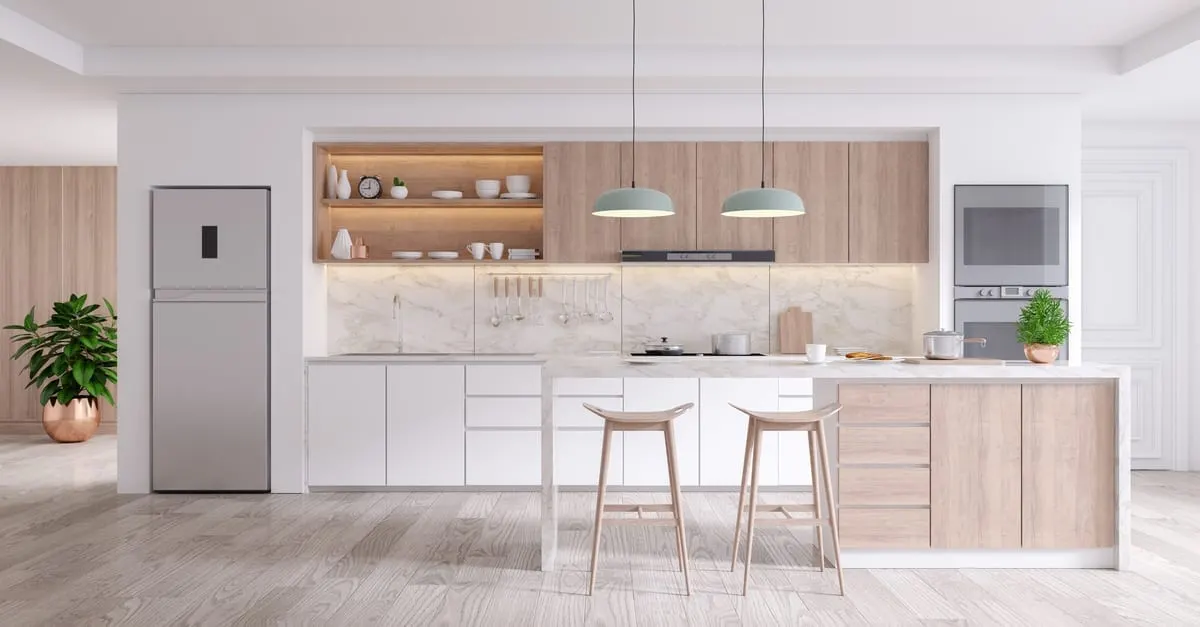A kitchen is the heart of the home. It’s where you spend time with your family, share meals, and celebrate special occasions.
It’s also the room that can make or break the sale of your home. For this reason, it’s only natural to invest in quality kitchen countertops.
Read on to learn the types available and their pros and cons.
Why Invest in Kitchen Countertops?
Whether you’re building a new home or updating your current one, the money you spend in the kitchen will almost certainly see a high return on your investment.
You can make back between 57 and 62 percent of what you invest in a kitchen. That’s one of the highest returns on investment you can get from a project in your home.
The trick is to choose materials that look nice but also fit into your lifestyle and budget. One of the most crucial choices you can make in your kitchen is the countertop.
Types of Kitchen Countertops
To make things a little easier, we’ve broken down the top 10 counter materials to help you find the one that not only fits your needs but will pay off in the long run, too.
Laminate
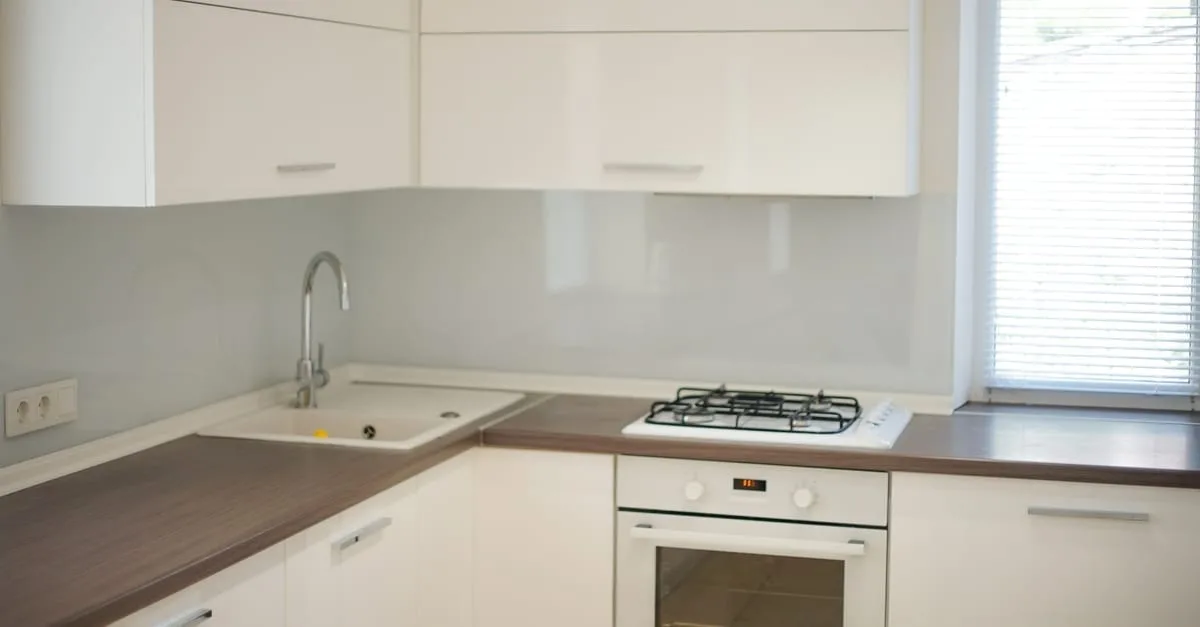
Nataliya Sdobnikova/Shutterstock
Cons: Not heat-resistant, easily scratched, and can look as inexpensive as it is
Best For: A budget-friendly kitchen
Laminate is the least expensive option you can find. It’s made through a process where plastic is layered and then affixed to particle board. It’s a pretty low-maintenance choice in the world of kitchen countertops.
And it also comes in a lot of styles that can look very similar to more expensive options, such as quartz or granite. The biggest hurdle you’ll have to overcome with a laminate countertop is that it’s not heat-resistant and can scratch easily.
Plus, you won’t be scoring many points with potential homebuyers if you think you’ll want to sell down the road. But maybe you’re looking for something inexpensive and easy to find.
In that case, laminate may just be the right choice for you. According to Home Depot, laminate countertops will cost between $27 and $34 per square foot.
Solid Surface
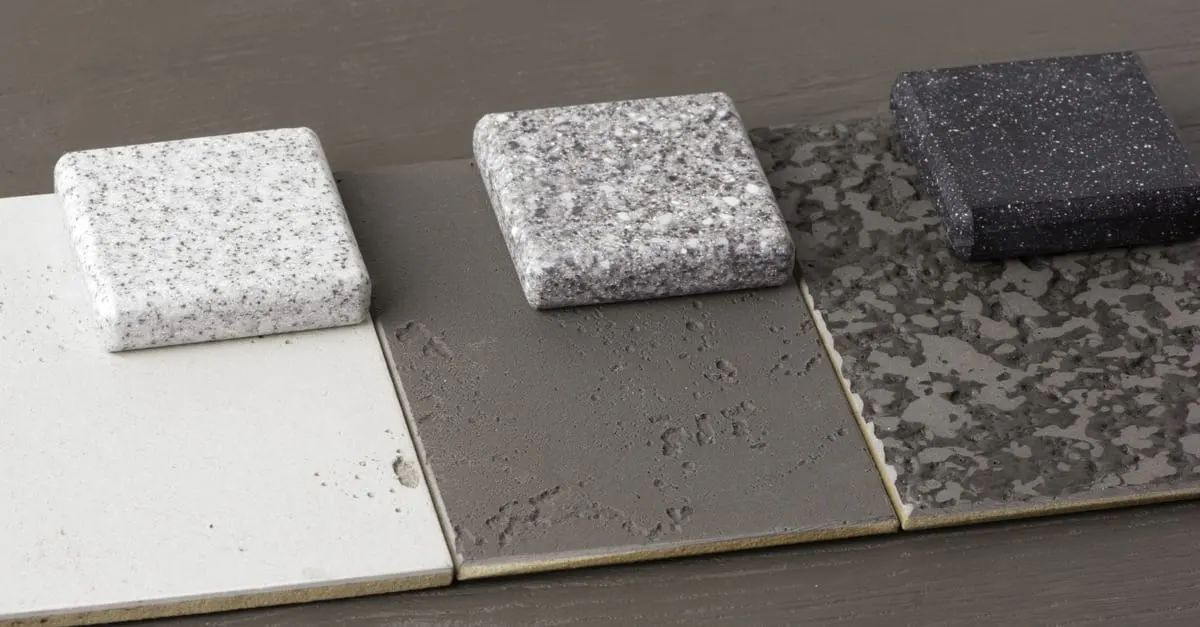
Mariolla1/Shutterstock
Cons: Heavy and not made from renewable resources
Best For: Those who like the look of quartz but don’t like the price
A solid-surface countertop is one that is created with acrylic resins but made to look like other natural stone options.
If you’ve ever heard anyone talk about Corian countertops, then a solid surface countertop is what they’re talking about.
Because these countertops are made for the sole purpose of being in your kitchen, they’re very durable.
They’re resistant to stains and sturdy enough to stand up to the most frightening of toddler messes, which makes them a great choice for families.
What turns most people off about these countertops is that they’re not environmentally friendly, as they’re made almost entirely out of resources that aren’t renewable.
Plus, they’re very heavy, so you have to have them installed by someone who knows what they’re doing and has the cabinet structure to properly support all that weight.
Solid surface counters don’t require any maintenance. No oil or sealants are required. You simply need to wipe them down with your preferred cleaner, and boom! Clean and shiny countertops.
Solid-surface countertops look quite high-end, but they’re affordable. They can cost between $40 and $65 per square foot.
Butcher Block
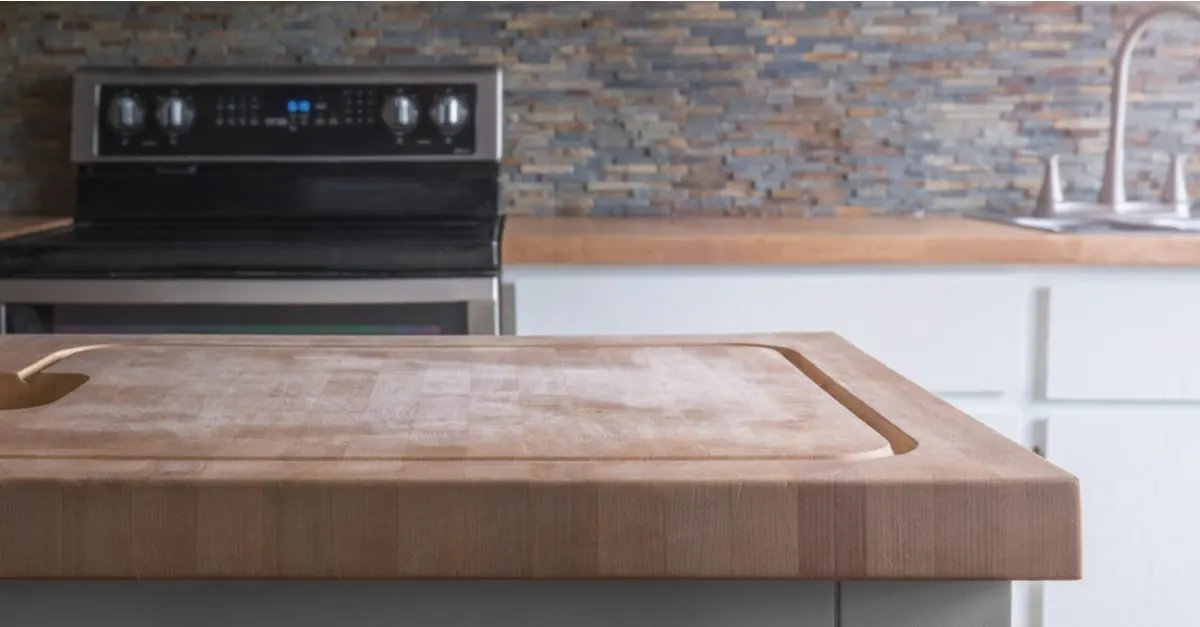
Derek Brumby/Shutterstock
Cons: Doesn’t play well with water, can burn from hot pans, and can stain easily
Best For: Those looking for a durable, natural surface to accent their kitchen design
Butcher block provides a classic look for any kitchen. It’s made by gluing together strips of wood to create a slab with that distinctive butcher block look.
It can be made from all types of wood, from birch to oak to cherry, but is most often made from white maple.
One of the most impressive things about butcher blocks is their durability. Plus, if it gets damaged, it’s easy to repair and reseal. But there are a few things to be wary of if you’re taking a closer look at this countertop material.
It’s made of wood, which means that you run the risk of warping it or causing the wood to rot if it’s left wet for too long.
And while it’s technically heat-resistant, it’s not resistant to burning, so you don’t want to set a hot pan on it, or you’ll leave a mark. It can stain pretty easily, too.
In the grand scheme of kitchen countertops, butcher block is fairly easy to take care of. You simply need to wipe them down with oil about every six months to keep them supple and protected.
However, the frequency of oiling depends on the type of wood your counters are made from, so check with the manufacturer. Butcher block can run between $72 and $100 per square foot.
Ceramic Tile
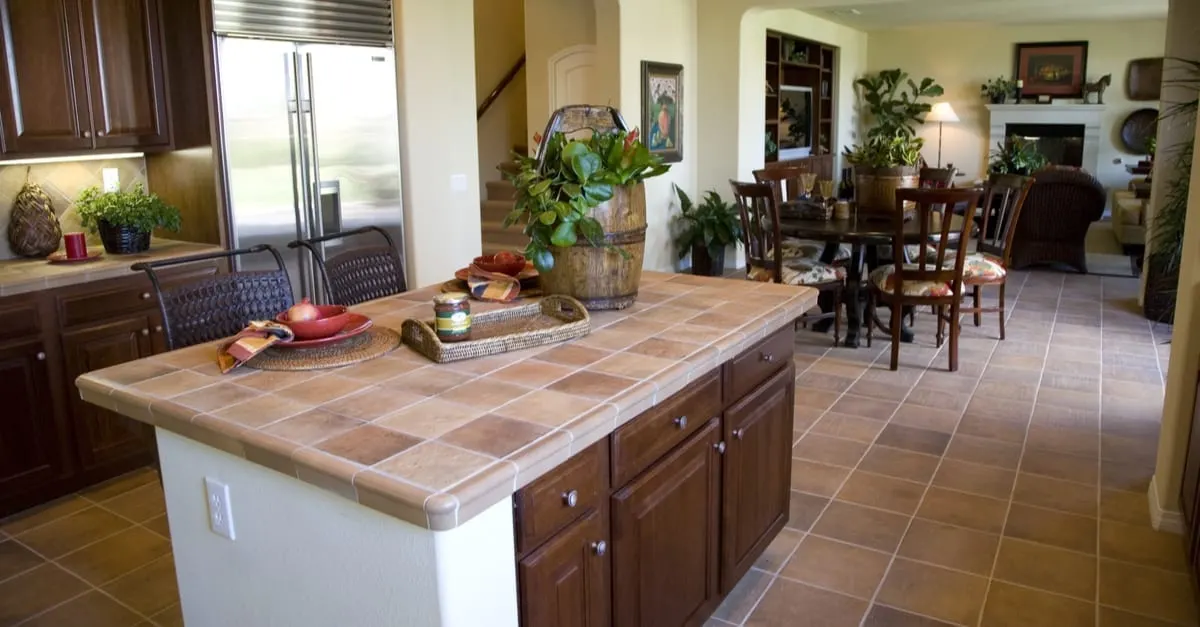
Rodenberg Photography/Shutterstock
Cons: Grout can become dirty and make for an uneven surface
Best For: Someone who wants a DIY kitchen countertop to save on money
You’ve probably seen more than one home with a ceramic tile countertop. In certain homes, this is a great look because it has so many designs and colors to choose from.
The tiles are made from different blends of clay that are glazed and fired in a kiln to make them hard.
There are so many types of ceramics to choose from, including porcelain, that these can be incredibly inexpensive countertops to install. On the other hand, they can be pretty pricey. The choice is up to you.
Ceramic tiles are still quite popular because they’re so easy to install and make a great project for all you DIY weekend warriors out there. You can easily customize and cut the tiles to fit every nook and cranny in your kitchen.
Plus, ceramics are naturally heat and scratch-resistant and not impacted by the harsh chemicals you sometimes have to use to clean your kitchen.
The biggest drawback of ceramic tile countertops is the grout lines in between the tiles. They can make for an uneven working surface and can collect grime as time goes on.
But if you’re looking for a low-maintenance countertop, then ceramic tiles may fit the bill. You simply need to wipe them down with a cleaner and scrub the grout every once in a while to keep it looking nice.
There’s a wide range in price when it comes to ceramic countertops. You’re looking to spend anywhere between $5 and $50 per square foot, depending on how fancy you want the tiles to be.
Concrete
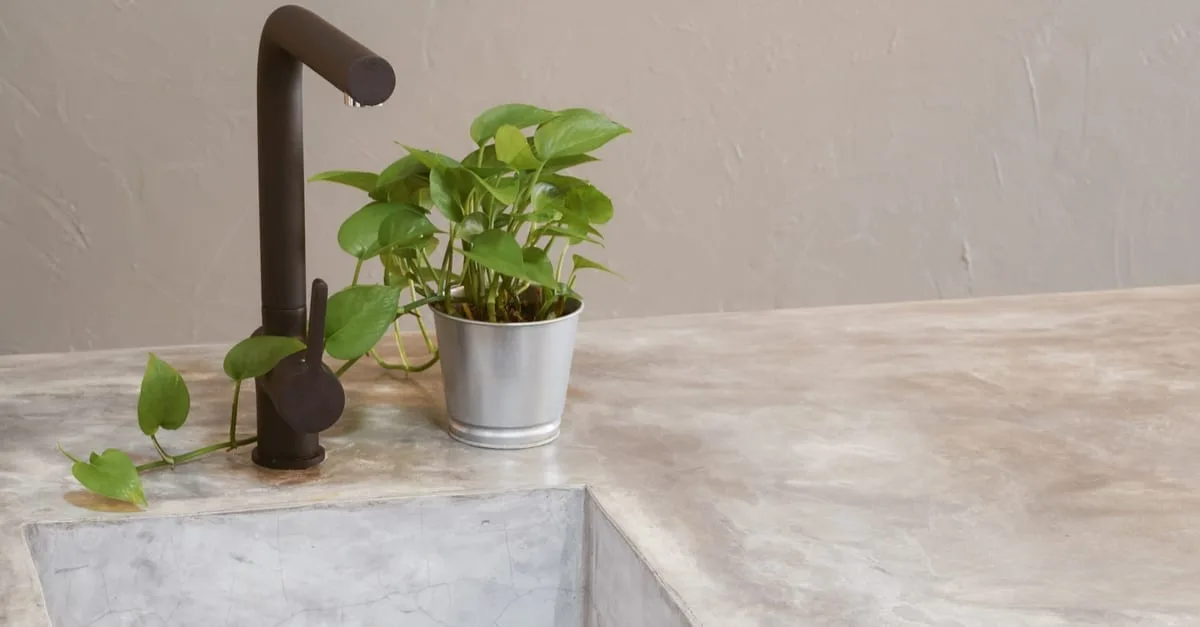
James Teohart/Shutterstock
Cons: Vulnerable to stains and scratches, must be sealed every few years
Best For: Those looking to create a modern look in their kitchen without paying an arm and a leg
If you’re looking for a countertop option with a modern, industrial feel or for something a bit rustic, then look no further than concrete. In the last few years, concrete has really taken off as a countertop surface.
Countertops made from concrete can be precast and installed in your home or poured in place.
Professional installers can often create different colors and textures in the concrete too, so it’s a pretty versatile material that is incredibly durable.
Perhaps one of the best things about concrete as a countertop surface is how easy it is to personalize. It can be stained, tinted, and cast into a variety of shapes. If you’ve got an unusually shaped kitchen, then concrete can be an ideal material.
While concrete is literally as hard as, well, concrete, as a countertop surface, it can show scratches and spills over time, even if the surface is sealed.
Fortunately, all you have to do to keep your concrete countertops looking great is reseal them every two to three years. You also shouldn’t use harsh chemicals on the surface or scrub them very hard. You may want to consider waxing them to help prevent stains, too.
Concrete countertops will cost you between $65 and $135 per square foot.
Stainless Steel
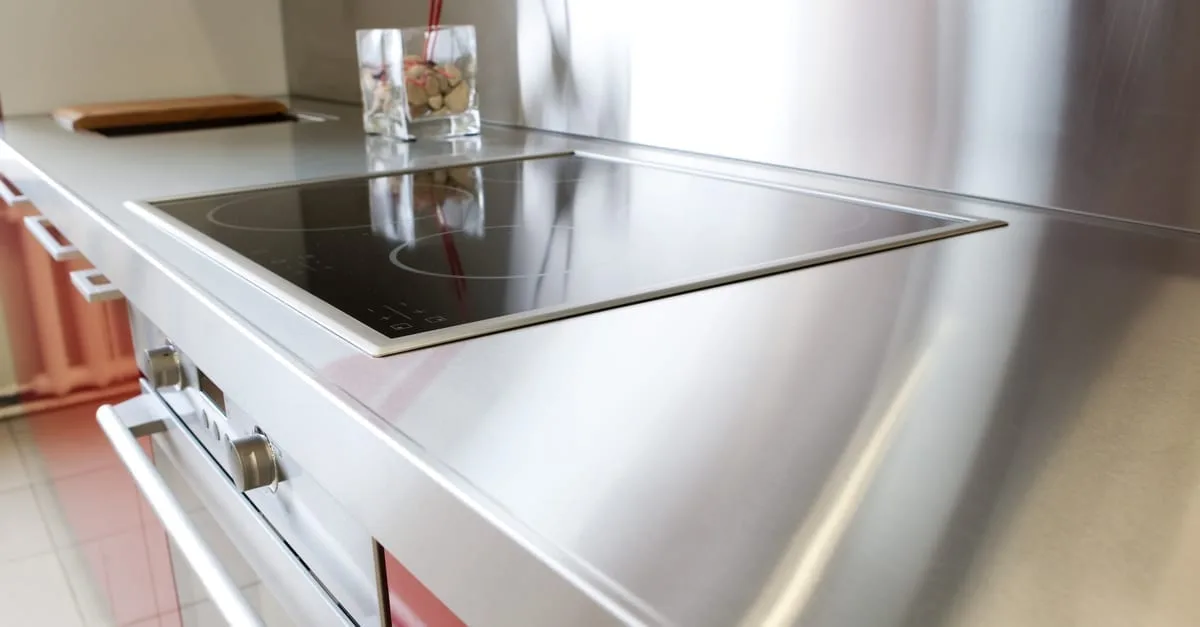
JuliusKielaitis/Shutterstock
Cons: Can scratch and dent easily, show streaks and fingerprints, and may not fit into the style of many homes
Best For: Those who want a very low-maintenance countertop with a modern feel
You find stainless steel countertops in professional kitchens all over the world because they’re extremely durable. You don’t have to worry about stains or spills, and it can handle heat easily.
The reason you may not see a lot of stainless steel countertops in homes is because of their look.
It’s industrial and contemporary, which doesn’t feel very homey. They’re also not indestructible and can scratch and dent just as any other metal surface can.
Caring for stainless steel countertops is very easy. Wipe it down with a wet rag or a little cleaner, and you’re done!
Stainless steel as a countertop choice is one of the more expensive options. You’ll pay between $80 and $225 per square foot, according to HomeAdvisor.
Granite
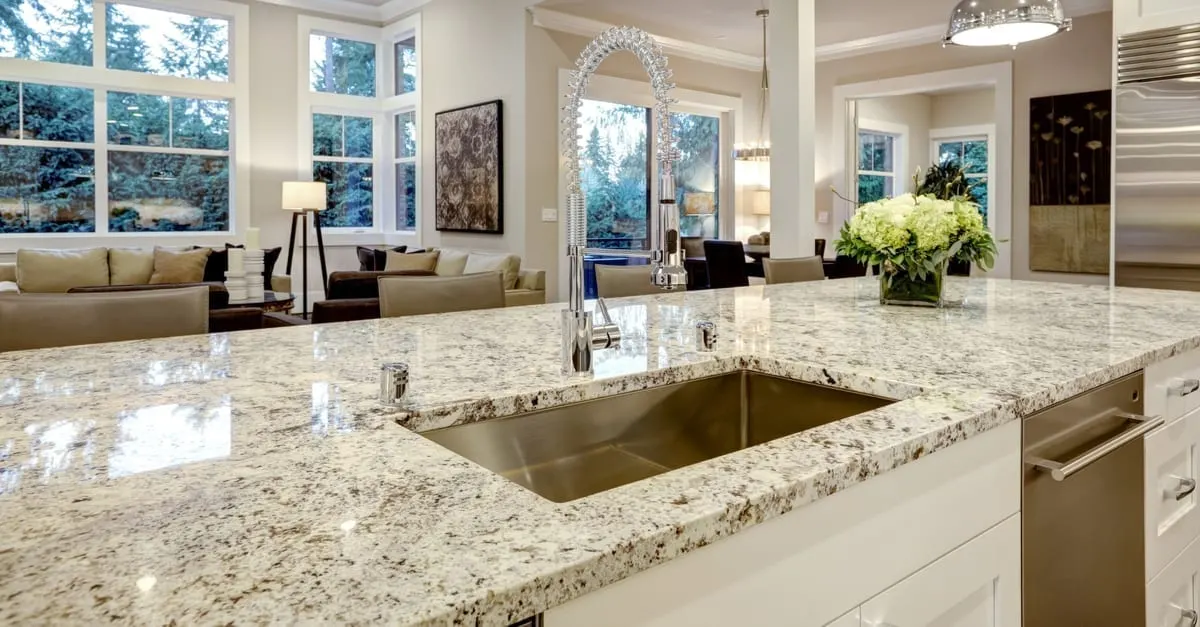
Artazum/Shutterstock
Cons: Expensive, heavy, and can crack
Best For: Those who want a durable countertop surface and don’t mind investing the money in it
Now we’re getting into the big leagues! Granite is a very popular countertop surface, not only because the natural stone looks beautiful and comes in a variety of colors (black, white, etc.), but also because it’s naturally heat and scratch-resistant.
It can also require the use of harsh chemicals in the kitchen. In other words, it’s pretty and durable, a combination you don’t find with many countertop options.
Of course, granite countertops can cost quite a bit of money, which puts them out of many people’s budget when renovating a kitchen and is a definite disadvantage.
These countertops are also very heavy, which means you must have cabinets that can support them; otherwise, the granite could crack under its own weight.
Granite also requires some care and maintenance. They should be sealed every few years in order to keep them looking beautiful, and for day-to-day cleaning, you only need to wipe them down with a mild cleaner.
If you’re considering granite for your counters, then you’ll be paying between $45 and $200 per square foot, according to HGTV.
Quartz
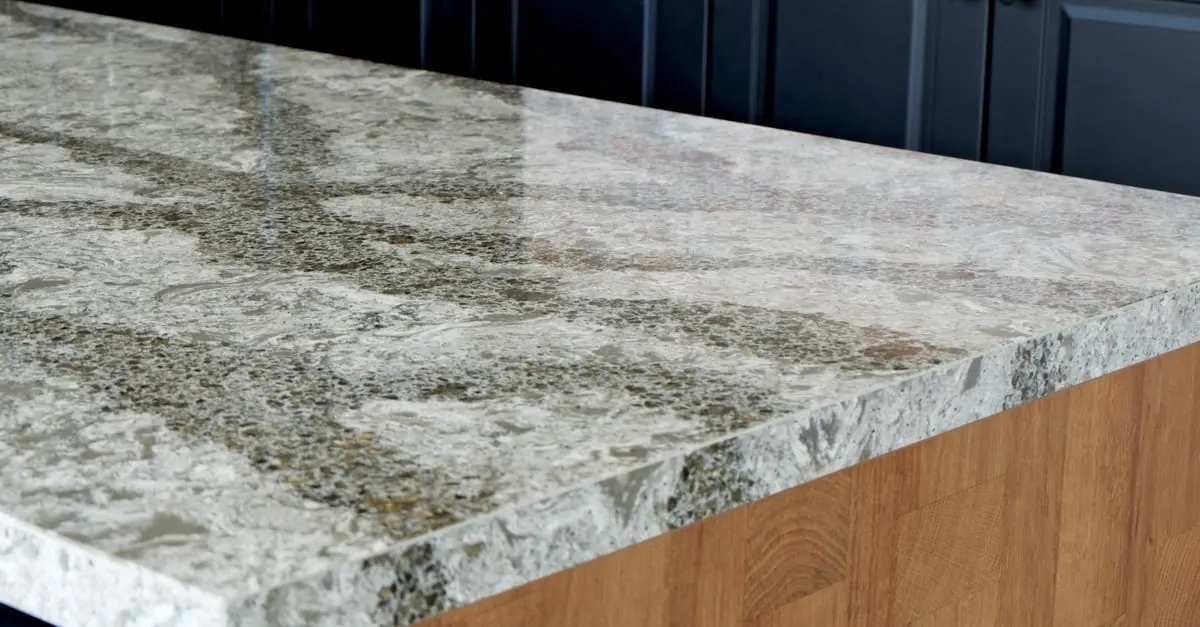
Papakah/Shutterstock
Cons: Requires a certified installer, is heavy, and is expensive
Best For: Those that don’t mind an engineered stone countertop and want something that should last for years
Quartz is a man-made material created by binding together crushed quartz rock with pigments. What’s nice about quartz is that it comes in a variety of colors and is more uniform than natural rock countertops like granite.
Plus, it’s easy to maintain and heat-resistant. You can also use cleaners on it without worrying about damage. It’s incredibly durable, like a feather in the hat of any kitchen countertop.
While quartz is technically heat-resistant, it can scorch, so it’s not advised that you place hot pans directly on the surface.
Some people also don’t like that the seams of quartz countertops are visible. But if that won’t bother you, then that’s not really a drawback to this countertop option.
Perhaps one of the biggest selling points of quartz is the care it requires, which is very little. You don’t have to seal it or polish it; just wipe it down with a mild cleaner.
Quartz countertops will cost you between $50 and $150 per square foot.
Soapstone
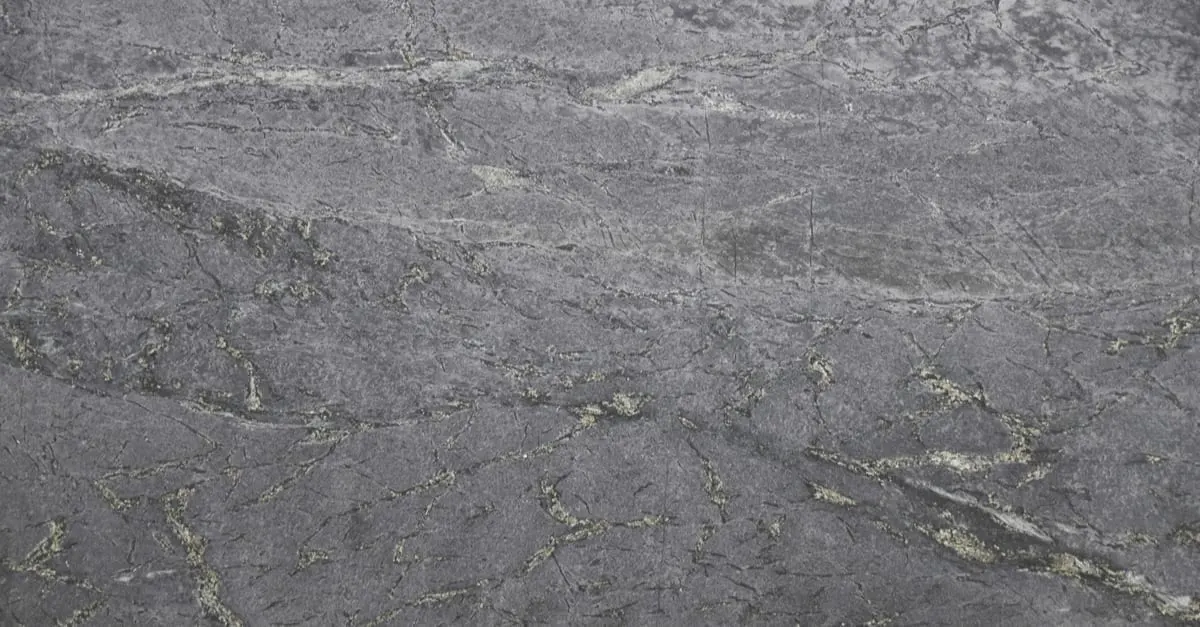
Purple Moon/Shutterstock
Cons: A soft surface that can chip or scratch takes a lot of upkeep
Best For: Those who want a natural countertop surface but want something with more of a dark, rustic look
Soapstone is another natural stone option available for countertops in your kitchen. It’s not quite as elegant as granite or marble due to its more, well, rustic vibe. It has a very smooth surface and is relatively durable for a natural stone surface.
It’s easy to clean, too. One big drawback to soapstone, however, is that it’s soft. Because of this, you shouldn’t cut directly on it, or you can risk scratching or chipping it.
And if you’re a bit klutzy and drop things in your kitchen a lot, soapstone can be damaged by dropping heavy objects. Caring for soapstone does take a bit of a commitment.
While you can easily clean it from day to day with a mild cleaner, it will need to be regularly oiled and then buffed in order to help it maintain the texture that draws so many people to it. Soapstone will cost you between $70 and $120 per square foot.
Marble
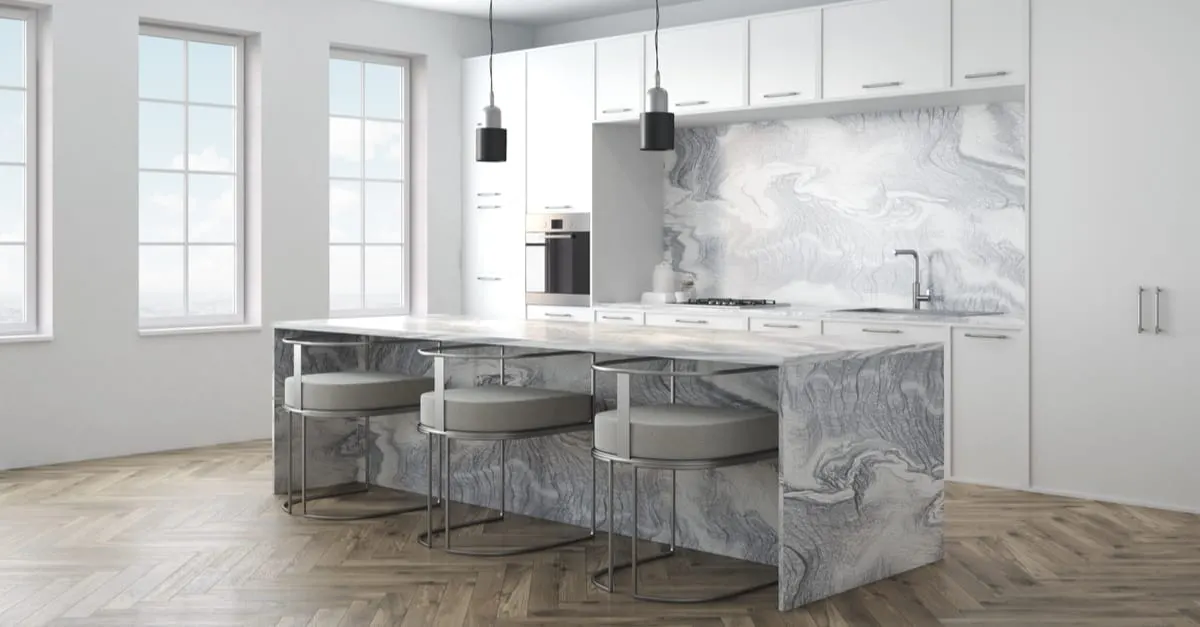
ImageFlow/Shutterstock
Cons: Delicate, requires frequent sealing, easy to scratch
Best For: The Queen of England and anyone else who wants to significantly up the elegance factor of their kitchen
If you’re looking for a classic look and a countertop that can brighten up your space, then marble may just be the surface you’ve been looking for. Marble happens to be heat-resistant, too.
The problem with marble is that it’s a delicate surface for your counters. As a natural stone, it’s porous and soft, which means that it’ll scratch easier than other countertop options like granite. It can also be affected by chemicals you may use to clean your kitchen.
To care for marble, you’ll also need to seal it frequently. Every six months or so, you’ll have to apply a quality sealer to help keep your marble from getting stained, marked, or absorbing liquids.
If you have small children with a penchant for brightly colored Kool-Aid, then marble may not be the best choice for you.
If you’re still loving the idea of marble, you may be thinking that marble is way out of your price range, but that’s not necessarily true. There are some types of marble that can be incredibly expensive.
However, the most common type of marble, called Carrera, is a relatively inexpensive natural option for counters. You’ll pay between $75 and $250 per square foot for marble.
Which Material Makes the Cut?
The type of countertop you ultimately choose for your new kitchen or kitchen remodel is a highly personal choice. You have to weigh your budget constraints.
But you must also consider how well the surface can fit into the life of your kitchen. Of course, now that you’ve armed yourself with all the information, it’s a much easier decision to make!

